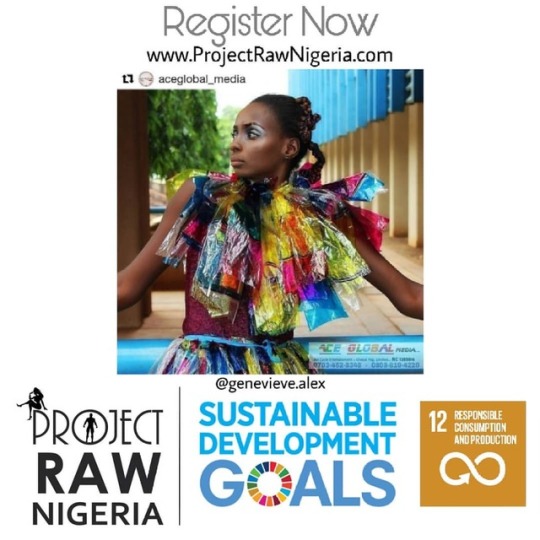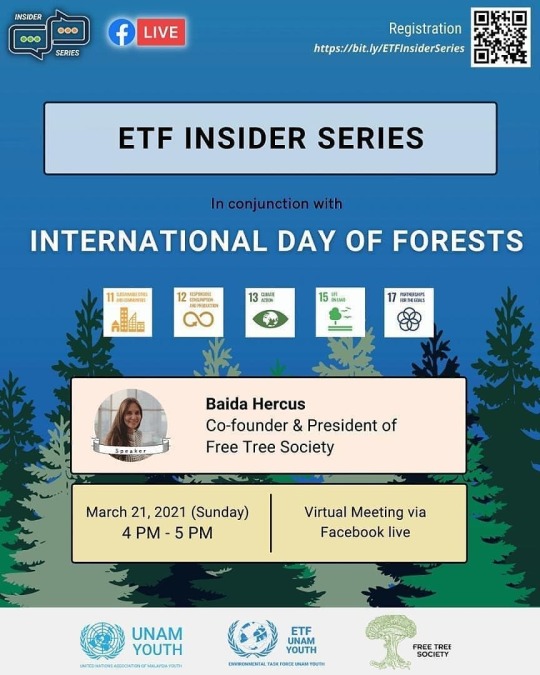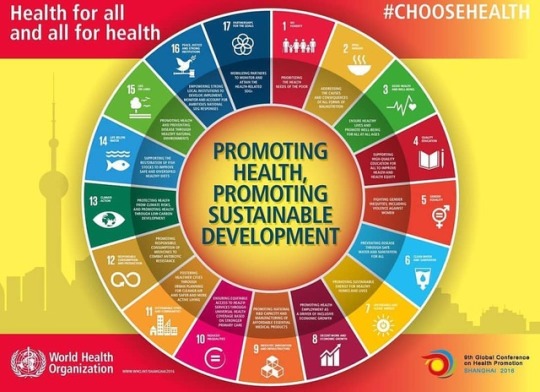#RESPONSIBLECONSUMPTIONANDPRODUCTION
Explore tagged Tumblr posts
Text
"Ready to join the revolution for responsible consumption and production? Viren Aikyam introduces the revolution of approaching organic food in bamboo and clay kitchen utensils - the perfect combination for a sustainable and healthy lifestyle. Say hello to eco-friendly alternatives. Contact us now to be a part of this movement and make a positive impact on the planet. #VirenAikyam #SustainableLiving #GoGreen #OrganicFood #EcoFriendlyUtensils
#ResponsibleConsumptionandProduction
#sdgs2030"

0 notes
Photo

SDGs 는 2015년 9월에 #un 회원 193개국이 2016년부터 2030년의 15년에 걸쳐 임하는 개발 방식을 가리키는 말로, SDGs가 제시하는 17개 목표 각각에 색깔을 넣어 홍보를 하는 #방법 이 눈에 띕니다 SDGsは2015年9月に国連 加盟193か国が2016年から2030年の15年間にかけて臨む開発 のやり方を指す言葉 で、SDGsが提示する17つの目標のそれぞれに色を入れて#pr する#方法 が目立ちます 하지만 어떤 #은행 이 이 SDGs 실천을 표방한 심볼을 #회사 건물에 부착하는 바람에 최근까지 이 목표의 갯수를 자주 착각했습니다 しかし、ある#銀行 がこのSDGs実践を標榜したシンボルを#会社 の建物 に付着するせいで、最近までこの目標の数をよく勘違っていました #나고야 근처의 기후현이 본사인 현존하는 #일본 에서 가장 오래된 이 은행 이름은16은행입니다. #名古屋 近くの岐阜県 が本社である現存する日本最古のこの銀行名は#十六銀行 です #sdgs #nopoverty #zerohunger #goodhealthandwellbeing #qualityofeducation #genderequality #cleanwaterandsanitation #affordableandcleanenergy #decentworkandeconomicgrowth #industryinnovationandinfrastructure #reducedinequalities #sustainablecitesandcommunities #responsibleconsumptionandproduction #climateaction #lifebelowwater #lifeonland #peacejusticeandstronginstitutions #partnershipsforthegoals (矢田川에서) https://www.instagram.com/p/CpANWMnpele/?igshid=NGJjMDIxMWI=
#un#방법#pr#方法#은행#회사#銀行#会社#나고야#일본#名古屋#十六銀行#sdgs#nopoverty#zerohunger#goodhealthandwellbeing#qualityofeducation#genderequality#cleanwaterandsanitation#affordableandcleanenergy#decentworkandeconomicgrowth#industryinnovationandinfrastructure#reducedinequalities#sustainablecitesandcommunities#responsibleconsumptionandproduction#climateaction#lifebelowwater#lifeonland#peacejusticeandstronginstitutions#partnershipsforthegoals
0 notes
Photo

#ProjectRawNigeria • #2016 Photography by @arch.angel.raphael showing model (@genevieve.alex) wearing a dress made from recycled materials at a UNN (#UniversityofNigeriaNsukka) #Fashion event • Follow @projectrawnigeria @projectrawafrica to REGISTER now... • #SDGs #ResponsibleConsumptionAndProduction #SustainableDevelopmentGoals • As you prepare your costumes after registration, we advice you to study about the SDGs online. (Wikipedia) • Our focus are; 1). No Poverty 2). Zero Hunger 4). Quality Education 5). Gender Equality (Women Empowerment) 10). Reduced Inequalities 12). Responsible Consumption and Production 17). Partnership for the Goals (at Nigeria) https://www.instagram.com/p/BxhB7F6Hk4f/?igshid=3ttl353225kk
#projectrawnigeria#2016#universityofnigeriansukka#fashion#sdgs#responsibleconsumptionandproduction#sustainabledevelopmentgoals
1 note
·
View note
Photo

Unam Youth Environmental Taskforce is thrilled to announce our first ETF Insider Series in conjunction with the International Day Of Forests. The event will be held in March 21, 2021 from 4pm-5pm via Facebook live. Our speaker is the incredible Baida Hercus, the co-founder & president of Free Tree Society. Sign up at https://bit.Ly/ETFInsiderSeries We can’t wait to see you there for such an informational event! #internationaldayofforests #sustainablecitiesandcommunities #responsibleconsumptionandproduction #climateaction #lifeonland #partnershipforthegoals #globalgoals #unamyouth #etfunamyouth #freetreesociety #un #unitednations #malaysia #Repost @una.malaysia • • • • • • https://www.instagram.com/p/CMbzgzchQz4/?igshid=cscn733dkbea
#internationaldayofforests#sustainablecitiesandcommunities#responsibleconsumptionandproduction#climateaction#lifeonland#partnershipforthegoals#globalgoals#unamyouth#etfunamyouth#freetreesociety#un#unitednations#malaysia#repost
0 notes
Text
GOAL 12: Responsible Consumption & Production
“The situation the Earth is in today has been created by unmindful production and unmindful consumption. We consume to forget our worries and our anxieties. Tranquilizing ourselves with over-consumption is not the way.”
The quote above speaks volumes of how far humanity has come to. We excessively use our resources and then mass produce again for more without thinking about the repercussions. Earth provides us with many things, but it is our job to use it wisely and help it grow back; it’s a give-and-take situation. Because this planet we live in is not unlimited nor is it invincible. If we keep on “unmindfully” producing and consuming, this world and the people living in it will eventually give out.Let the facts speak for themselves.Each year, 1.3 billion tons of food produced worth $1 trillion – ends up rotting in the bins of consumers and retailers or spoiling due to poor practices while 1 billion people go undernourished and another 1 billion hungry. On the other end of the spectrum, over 2 billion people globally are overweight and obese.Less than 3 percent of the world’s water is drinkable and 2.5 percent of that is frozen in the Arctic. Therefore, humanity must rely on 0.5 percent for all of our needs. Given that fact, man still continues to excessively use and pollute water faster than nature can provide it. On other parts of the world, over 1 billion people still do not have access to fresh water.Despite technological advances that promised to bring forth energy efficiency gains, excessive energy use still continues to rise by 35 percent in major countries. Commercial energy is rapidly growing as well as residential energy. Households continue to consume 29 percent of global energy and contribute environmentally damaging emissions.Should the global population reach 9.6 billion by 2050, the equivalent of THREE PLANETS could be required just to provide all of us with natural resources to sustain our current lifestyles.These numbers and facts are not the things you just shrug off because you think it doesn’t directly affect you. We live here so it clearly does. Let’s not wait for worse things to happen. Let’s try adopting a lifestyle of doing more and better with less resources wasted. It’s not just about preservation anymore. It’s about creating a quality of life where we are able to give a sustainable future for our whole planet and everyone else living in it.
2 notes
·
View notes
Photo

Credit to from @kaibeyacarefoundation - At @kaibeyacarefoundation we support the #globalgoals as we believe that each of the goals is linked to living healthy, fulfilling lives and building prosperous cities and communities in addition to a sustainable planet. This is what informs our projects and partnerships. #GlobalGoals #GivingTuesday #NoPoverty #ZeroHunger #QualityEducation #GoodHealthandWellbeing #GenderEquality #CleanWaterandSanitation #AffordableandCleanEnergy #DecentWorkandEconomicGrowth #IndustryInnovationandInfrastructure #ReducedInequalities #SustainableCitiesandCommunities #ResponsibleConsumptionandProduction #ClimateAction #LifeBelowWater #LifeonLand #PeaceJusticeandStrongInstitutions #PartnershipsfortheGoals #KaibeyaCareFoundationAfrica #PartnershipsforHealth #PartnershipsforDevelopment #PartnershipsforProgress #PartnershipsfortheGoals - #rayofhopeempowermentfoundation #rohef #regrann https://www.instagram.com/p/BvwJf0LFIuc/?utm_source=ig_tumblr_share&igshid=cbyynm2ctr8d
#globalgoals#givingtuesday#nopoverty#zerohunger#qualityeducation#goodhealthandwellbeing#genderequality#cleanwaterandsanitation#affordableandcleanenergy#decentworkandeconomicgrowth#industryinnovationandinfrastructure#reducedinequalities#sustainablecitiesandcommunities#responsibleconsumptionandproduction#climateaction#lifebelowwater#lifeonland#peacejusticeandstronginstitutions#partnershipsforthegoals#kaibeyacarefoundationafrica#partnershipsforhealth#partnershipsfordevelopment#partnershipsforprogress#rayofhopeempowermentfoundation#rohef#regrann
0 notes
Photo

A few ways of taking care of your compost. Keeping the soil rich and the streets clean. #sdg12 #zerowaste #staredownonpollution #responsibleconsumptionandproduction (at Lagos State)
0 notes
Photo

When implementing the #ManageTeamz into small or large scale transport industry, it helps to control the responsible consumption of energy by reducing the distance travelled and pollutant emission. https://goo.gl/m5pDxH #SDG12 #ResponsibleConsumptionandProduction
1 note
·
View note
Text
Earlier today, some staffs of @Kidsandteensngo were at Just Once Model College, Akure, for #ProjectSDGfy They educate the Students on #SDG1 #SDG2 & #SDG12 #NoPoverty #ZeroHunger #ResponsibleConsumptionandProduction #LeavingNoOneBehind #SDGs #sustainability #2030 #Akure pic.twitter.com/NJRUuTExBA
— OL��WATÓBILÓBA .T. ADÉSUYÌ (@Ms_Tiwalade) January 30, 2020
0 notes
Text
Ensure sustainable Consumption and Production patterns
We know the world’s natural resources are limited, but we’re using more water, mining more minerals and cutting down more forests than ever before. We’re also throwing more stuff away – a lot more. In 1900 the world generated 300,000 tons of rubbish a day. Fast forward 100 years to 2000, and that had shot up to 3 million tons per day. And what’s really crazy is that while 1 in 9 of us are hungry, every year a third of the food we produce is lost or wasted. So we not only need to consume less, we need to make sure it goes further. If we hit this goal, it could change the lives of millions of people living today, but the real impact will be felt by future generations. Instead of severe water shortages, pollution and ravaged earth, we could leave them a sustainable planet that provides everything they need. "As long as poverty, injustice and gross inequality exist in our world, none of us can truly rest."-Nelson Mandela
1 note
·
View note
Text
PRODUCTION HABIT
There are various production habits in the production of material resources. For the purposes of illustration, the habits can be broadly categorized as mass and lean production habits. The mass production habits considerably dominate in the modern societies. They are associated with technological and industrial production that targets not only the local consumers, but also the regional and the global consumer markets. Slattery (2008) cited that technological innovation has led to the realization of surplus material production. The material resources that are related to mass production habits include energy, capital and the raw material resources. For example, mass production habits of energy have led to exploitation of coal and use of fuels to drive the power machines in the production industries. The resources are thus extensively exploited to meet the immediate global demand of the end products. The end products are also harmful to the ecosystem. The second production habit, lean production, is the opposite of mass production. This habit is associated with utilization of material resources to produce other materials that meet only the demands of the immediate consumer market. In this pattern, a lot of raw material resources are utilized for the production of just small portion of resources for human consumption. The lean production habit leads to the production of goods that may not meet demands of the consuming population or lead to lots of resources being spent in the input with much less output realized.
0 notes
Text
Considerations for Sustainable Production and Consumption for Global Population
Sustainable production refers to the initiatives that lead to creation of end resources and services through process that are devoid of environmental pollution. The energy and the resources are utilized in an efficient, economical and sustainable way not only to the environment, but also to the workers involved in the production process (Nash, 2009). The safety and health of the workers and consumers in the production process is thus guarded in this process. Sustainable consumption, on the other hand, involves consideration of the extent to which the products consumed meet the needs of the consumers and contributes to improvement of the quality of life. This ensures that the burden on the earth’s carrying capacity is reduced considerably. In order to sustain the global population, there is the need to assess the patterns of mass/industrial production and develop policies that will promote cleaner production. Slattery, (2008) argued that this will eliminate challenges associated with industrial pollution that lead to climate change thus limiting sustainable food production, for example. This can be realized through the development of cleaner production technologies, especially for the developing economies and those in transition. It also enhances realization of safe, healthy, and economically efficient production that can sustain the global population. Sustaining the global population requires production and consumption habits that are in themselves sustainable. This can be realized by consideration of production and consumption patterns that enhance improvement of environmental conservation (Nash, 2009). For example, the agricultural production habits must consider and mitigate the dangers associated with application of insecticides, aerosols and ammonium fertilizers on the ecosystem. Nash further contends that in terms of consumption, sustainability can be realized through promotion of the use of goods and services, which do not only contribute to better life for the present generation, but also the future ones (Nash, 2009). There is thus need to pass policies and laws that will contribute to the minimal use of natural resources, cautious use of toxic materials and elimination of emissions of waste and other pollutants into the environment.
0 notes
Text
CLEAN YOUR PLATE
Let’s face it. Food waste is a global shame. Especially in a world where billions of people are starving. They say that there is enough food in the world for everyone, but don’t let that fool you. Over 1.3 billion tons of food is lost each year and that is equivalent to at least one-third of all of it, and unless we take action, this will devastate our planet. One of the leading countries that waste food is US. Undoubtedly, the Western world's overconsumption of food is affecting global food prices: The more they consume (and the more they throw out), the greater global demand for food becomes – and the higher food prices rise globally. Let's imagine a pile of bananas, grown and produced in a developing country, transported all the way across the globe to a Western country just to be wasted because of some silly cosmetic reason. People in the very same developing country lack food. Imagine looking those hungry people in the eyes and telling them that the good bananas grown in their very own country are being thrown away just as fast they arrive in the Western world. We Filipinos are not without fault either. Each Filipino waste an average of 3.29kg/year, according to the Food and Nutrition Research Institute of the Department of Science and Technology (FNRI-DOST). With the same amount, more than 2 million Filipinos could have been fed. This is just in terms of rice, excluding the other kinds of food and resources we waste. Unless proper interventions are made, this vicious cycle can go on for years. So how do we solve this crisis? It’s simple. Stop wasting food. Don’t buy more than what you need, don’t overstuff your plate if you know you could only finish half of it, eat and cook leftovers, share with your neighbors, and be creative about it. We’re the ones who started this so it’s only fair that we should be the ones to end it.
0 notes
Text
The Dangerous Fantasy of Mass Engagement
The proposed metrics include using internet keyword searches to monitor whether the world’s citizens (those online, anyway) are aware of sustainable lifestyles. This highlights the real problem with SDG number 12. It blurs the distinction between production and consumption. One involves companies taking action (regulated by governments). The other requires consumers to demand change. But we don’t have to wait for mass awareness to create a step change in sustainable production. Take the example of consumers buying Coca-Cola’s new PET plastic bottle. It is made entirely from plant materials. Buyers are consuming sustainably without even realizing it. We need enough people to be aware to make a change in the market.
0 notes
Text
"Ensure sustainable consumption and production patterns."
The SDGs seek ‘the sustainable management and efficient use of natural resources’ by 2030. This will involve governments reducing subsidies for fossil fuels and targets to “substantiallyreduce” waste and, in particular, halve food waste. The big elephant in the room that the SDGs seem to dodge is growth. Overall demand is rising and it will continue to rise, particularly if we are to meet SDG number 1, and lift millions out of poverty. You can make the processes more sustainable, but if total demand rises faster, the outcome may be less sustainable overall. The reason for this is that market research shows consumers who shop sustainably always make up a minority. Studies vary by market, but it’s generally between 5 and 20 percent who will actively purchase products that are clearly branded as ethical or sustainable Most consumer goods companies have woken up to this imperative. They don’t want to sell products to a niche. They want to produce products responsibly and sell them to the mainstream. That sometimes means not talking about sustainability to consumers. Although it’s hard for people who feel passionately about these issues to believe, logos saying “organic” or “co-op made” are actually a turn off to some shoppers.
0 notes
Photo

Master Class in a Circular Economy:
As well as creating new opportunities for growth, a more circular economy will:
•reduce waste •drive greater resource productivity •deliver a more competitive Philippine economy. •position the Philippine to better address emerging resource security/scarcity issues in the future. •help reduce the environmental impacts of our production and consumption in both the Philippines and abroad.
0 notes